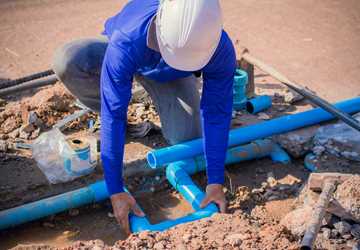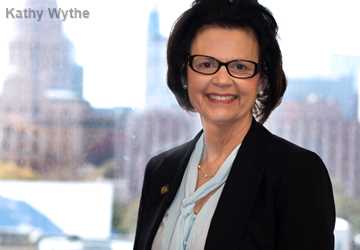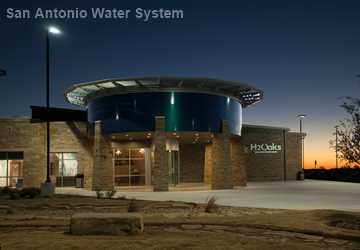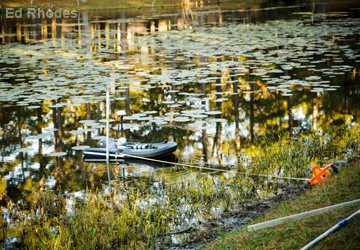When Kathleen Jackson was first appointed to the three-member Texas Water Development Board (TWDB), she asked her three adult children — sixth-generation Texans — what they thought people across Texas most wanted to know about water.
“They just want to know that everything is going to be okay,” Jackson recalled them responding.
Making sure that Texas water “is going to be okay” now and in the future is how Jackson has spent her time since first being appointed by then Gov. Rick Perry in 2014 and reappointed by Gov. Greg Abbott in 2017.
She travels all across the state, presenting and talking to Texans about the importance of water in Texas and how TWDB can assist communities in ensuring they have water for the future.
“It’s not just about sharing the resources of the agency, but it’s also about getting their (community leaders) thoughts and ideas and understanding what their challenges are, what the opportunities are and learning about what’s going on in the community,” she said, “because quite frankly, they’re going to need water to meet their goals and objectives.”
As an engineer, Jackson believes it is particularly important to engage with the engineering community because “they are the boots on the ground” for helping communities move forward with addressing aging infrastructure or building out new projects.
Kathleen Jackson, appointed to the Texas Water Development Board in 2014, travels all across the state, presenting and talking to Texans about the importance of water in Texas and how the agency can assist communities in ensuring they have water for the future.
More information
Want to get txH20 delivered right to your inbox? Click to subscribe.
Path to the board
Jackson’s path to serving as the engineer on the board began in Beaumont, Texas.
After graduating from North Carolina State University with degrees in chemical engineering and pulp and paper science and technology — the first woman to graduate with that degree — the Pensacola, Florida native moved to Beaumont, first to work at a paper company, then for Mobil (now ExxonMobil). Jackson held several engineering positions at the Beaumont refinery in the engineering design, operations, technical service and environmental departments.
It was through her work in environmental stewardship that Jackson gained an understanding of the value of water.
As part of a regional initiative, Jackson worked with Dr. Ruth Patrick, a renowned scientist with the Academy of Natural Sciences of Philadelphia (now the Academy of Natural Sciences of Drexel University), to conduct a biological survey of the Neches River to evaluate the health of the estuary. She also served on the board of the Lower Neches Valley Authority, one of the river authorities created by the state.
Jackson also developed a passion about agriculture after meeting her late husband, Tom, a fifth-generation Texan rice farmer and cattle rancher, in Beaumont. Jackson said her husband would tell her, “We make the perfect couple because people have to have food and they have to have energy.”
Because of her enthusiasm for environmental stewardship and engagement in the community, the oil and gas company eventually appointed Jackson its public and government affairs manager.
“I was very fortunate in that I was able to use the background I had and the education I had to make a contribution,” she said, adding that during this time at the refinery she worked on some strategic initiatives.
It’s not just about sharing the resources of the agency, but it’s also about getting their (community leaders) thoughts and ideas and understanding what their challenges are, what the opportunities are and learning about what’s going on in the community.
Kathleen JacksonJackson worked with local educators in support of the Texas Reading Initiative, and then Gov. George W. Bush appointed her to the Governor’s Focus on Reading Task Force. She also worked with a consortium in Southeast Texas to develop the Southeast Texas Alerting Network, a communications network that enables people to know and understand what is happening very quickly during emergencies.
Using her engineering background
She said her engineering degree and background served her well in the different positions she has held through the years.
“What I found over time is that engineers can do lots of things, having that good, strong technical background,” she said. “Engineers are trained to be problem-solvers, to execute to a process and to ask the question, how do we measure success?”
When the opportunity arose in 2014 to become one of the three TWDB board members, Jackson accepted.
At the time she joined the board, the state was still grappling with the repercussions of the 2011 drought, Texas’ driest year on record. To address some of these issues, the Texas Legislature had created the State Water Implementation Fund for Texas (SWIFT), which Texas voters approved with a constitutional amendment in November 2013. SWIFT enabled the one-time investment of $2 billion from the state’s Rainy Day Fund to finance low-cost loans for projects in the state water plan.
“I believe the intent of the Legislature in establishing SWIFT was to incentivize communities to invest now and move big water supply projects forward,” she said.
What I found over time is that engineers can do lots of things, having that good, strong technical background. Engineers are trained to be problem-solvers, to execute to a process and to ask the question, how do we measure success?
As she traveled around Texas, talking to Texas water leaders, she asked them how they thought success could be measured to show the state is making a difference and achieving its goals.
“What they shared was, ‘We have a lot of big water supply projects that right now are just treading water. If we see those start to move forward, then we believe that would be a good indicator that we’re being successful,’” she said.
Jackson cited several large water supply projects that have since benefited from SWIFT funding. The Tarrant Regional Water District and Dallas Water Utilities Integrated Pipeline Project will transmit water from East Texas to both water entities. Another project, the Lower Bois d’Arc Lake, will be the first major reservoir built in Texas in nearly 30 years, and the Luce Bayou Interbasin Transfer Project, currently the largest water infrastructure project being constructed in the United States, will move water from the Trinity River to Lake Houston to help meet the growing water needs of the Houston area.
The agency hoped SWIFT would increase focus on water infrastructure projects and communities using TWDB’s other loan programs, such as the Clean and Drinking Water State Revolving Funds.
For the most part, Jackson said, TWDB has seen communities using the agency’s resources and funding programs more, particularly to upgrade their aging infrastructure.
Implementing these projects begins at the local level, Jackson said, so a key component to success is local leadership communicating the value of water and helping its residents understand that the community needs to invest in upgrading its infrastructure.
“We believe local communities know best,” she said, adding that as in the state water plan’s regional water planning process, implementation is a bottom-up process.
"You can have the money, and you can have the technology. But it’s up to the local community leadership to take the bull by the horns and move these projects forward."
One of the things Jackson noticed traveling around Texas and talking to city staff is that larger cities not only participate in the regional water planning process, but they also are able to successfully manage their assets to address their future water supply needs. Smaller communities also participate in the water planning process but don’t necessarily have those asset management plans, which, Jackson said, are “so important for success.”
You can have the money, and you can have the technology. But it’s up to the local community leadership to take the bull by the horns and move these projects forward.
To address this issue, TWDB, with input from the Texas Commission on Environmental Quality, is piloting an asset management program for six small communities. Consulting engineers are working with each community to develop asset management plans with specific deliverables, such as documenting up-to-date utility maps, equipment information and operating procedures.
“It’s not just about the steel and the pipe,” Jackson said, about identifying the assets. “It’s also about investing in the resources those communities need to promote efficient and reliable long-term operations.
“If a small community is out of water, then Texas is out of water,” she said. “So a lot of what we’ve done in the last five years is really look at what can we do to assist small and rural communities.”
Flood planning, post Harvey
The day after Hurricane Harvey, Jackson flew over Beaumont in a helicopter and saw first-hand the devastation and flooding to her own community. She said the natural question any community that’s experienced a major flood has is, “What can we do to prevent this from happening again?” The answer, Jackson said, is, “We want to be prepared.”
The first step for the state to be prepared for future flooding begins with planning and investing in the “absolute best data and best information,” she said, including improved mapping, modeling and weather data, and identifying mitigation efforts, both structural and nonstructural.
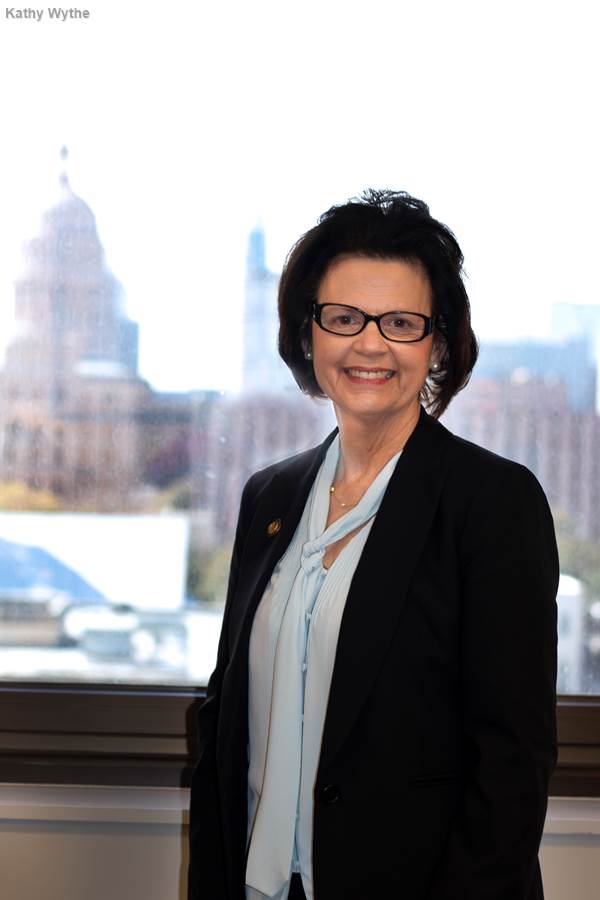
TWDB has been very successful in water planning because the planning is data driven and science based, Jackson said, and it makes sense to draw on that same approach for flood planning.
“The better the data, the better the science; the better the science, the better the policy,” she said. “We need to make sure that we get the best data that we can and utilize science, so that as we move forward, we have the information that communities need to make the best risk-based decisions.”
Perhaps prompted by Harvey and Texas’ susceptibility to weather extremes, building resiliency for the state’s water infrastructure is also on people’s minds. Jackson said Gov. Abbott calls it “future-proofing our state.”
“We don’t really know what’s coming, but we ought to be building out our infrastructure to be resilient, so when things happen, we are prepared and able to respond, and we have the resiliency already built in,” she said.
A dream come true
Reflecting on the path that brought her to the board, Jackson said she recognizes that all her experiences have been interrelated.
“Along the way, you learn a lot from everyone,” she said, seeming invigorated by the challenges the position presents.
And she is glad she took her children’s advice to “go for it,” calling her position on the board “a dream come true.”
“It’s my hope that I can take everything that people invested in me and everything that I’ve been able to learn and make a meaningful contribution to help communities across our state make sure they have the water they need so that our children and our children’s children have a future.”
Explore this Issue
Authors
As the former communications manager for TWRI, Kathy Wythe provided leadership for the institute's communications, including a magazine, newsletters, brochures, social media, media relations and special projects.



